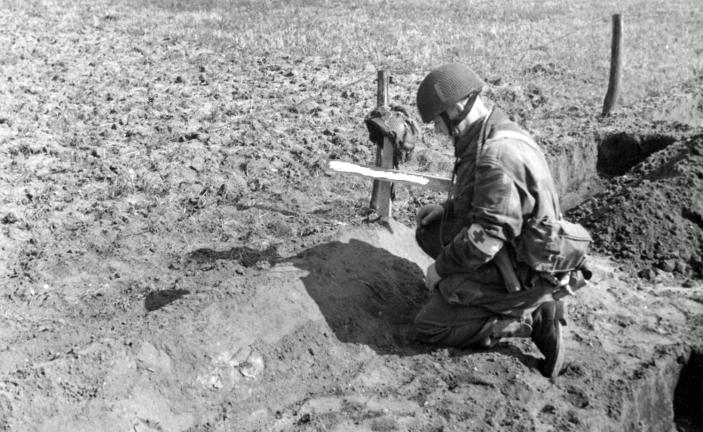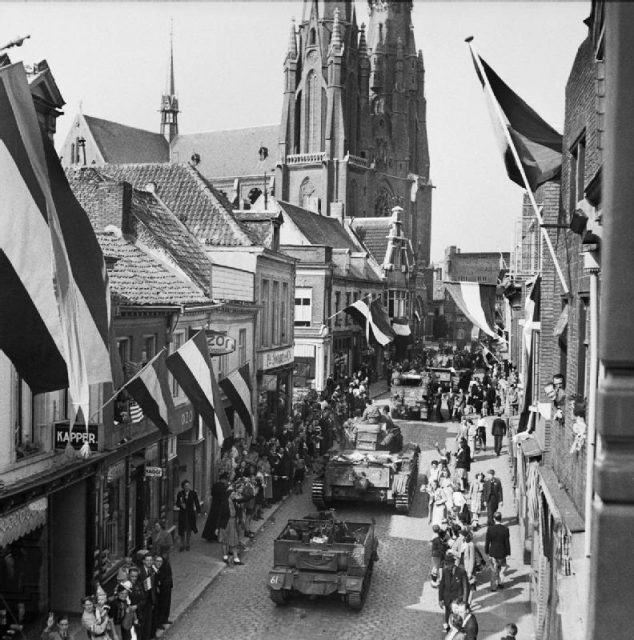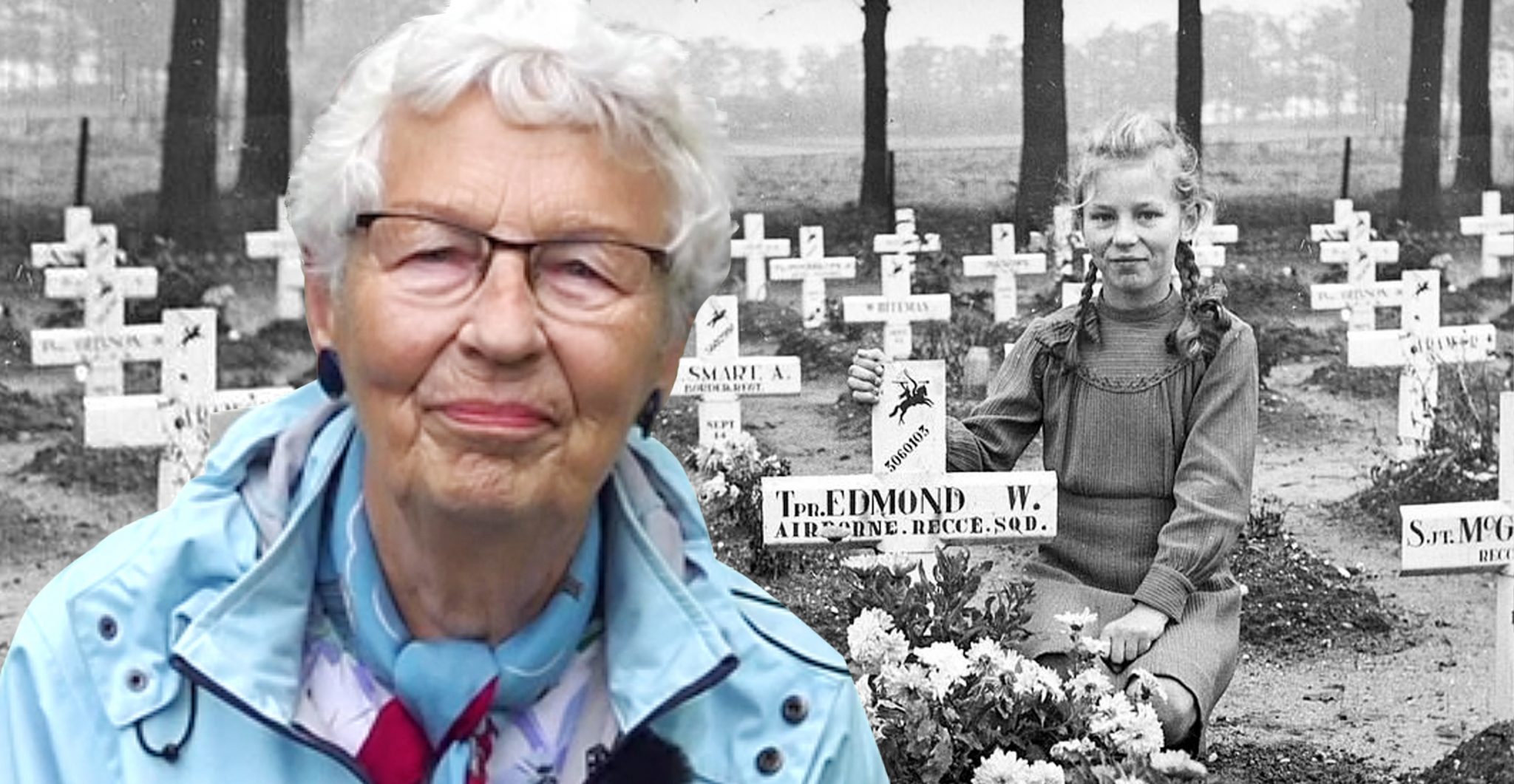Arnhem 75th. An elderly 84-year-old lady slowly makes her way through Oosterbeek War Cemetery in Holland and stops at one of the graves.
The grey-haired lady is Willemien Rieken, and the grave is the final resting place of Trooper William Edmond.
Neither of these people is famous, but they were drawn together by one of the most significant military operations at the beginning of World War II.

He was shot through the lung as he got up and dashed for safety, and had lost a lot of blood by the time his comrades were able to drag him to cover under fire. He was taken to the dressing station at No.9 Duitsekampweg, Wolfheze, but died the following morning. Six of the seven men killed in this ambush were buried here on the Monday morning. The photograph was taken by Sergeant Mike Lewis of the Army Film and Photographic Unit
Trooper Edmond was born in Musselburgh, near Edinburgh and was a member of the 1st Airborne Reconnaissance Squadron. On the 17th September 1944, he was shot in the back by a German sniper, while he was fighting as part of Operation Market Garden.
This operation was launched in 1944 and was a doomed attempt to land 35,000 Allied glider troops, mostly American, Polish and British, behind enemy lines. The objective was to secure several vital bridges spanning the Rhine.
The plan was for the troops to move forward from Eindhoven to Arnhem and then push into Germany. British forces managed to reach the bridge at Arnhem and managed to secure one end of the bridge. They were heavily outnumbered and came face to face with a SS Panzer Tank Division that they did not expect to be there.
When Trooper Edmond lay dying, reportedly his last words were for his wife, Janet, in England. He asked his mates to please visit her and to tell her that he loved her.
Willemien Rieken still remembers the fierce fighting that took place around her home in Arnhem. She was a nine-year-old schoolgirl at the time, and she remembers watching the paratroopers coming down the road where she was playing with other children.
Willemien remembers seeing the Jeeps carrying the soldiers and they drove down the road toward the bridge. A few hours later, she clutched her father’s hand very tightly as she was ushered inside by her parents as the sound of fighting and bombs exploding could be heard.

The family hid in their tiny cellar, beneath her father’s confectionery shop for five long days while the fighting raged above their heads. The family was dragged from the cellar by a German soldier, who interrogated them at gunpoint as he suspected they were harboring Allied soldiers.
Fantastic video here from the BBC with Willemien Rieken
This harsh treatment left a scar on Mrs. Rieken, as did the horrific discovery of the bodies of four British soldiers in their garden.
The family and their neighbors did not forget what the Allies had tried to do for their little community. After the war, they gathered together to pay tribute to the brave young men that had lost their lives in trying to free the Dutch
All the school children laid flowers on the graves of the fallen soldiers, and there is an old black and white photograph of a very young Willemien kneeling on the grave of Trooper Edmond. Her hair was tied up in two plaits, and she holds the cross marking the grave in one hand.
The #Arnhem flower girl still devoted to hero who liberated her village https://t.co/lXnoAHwEq4 pic.twitter.com/DoiC5J5zx6
— Galina Group Tours (@galina_tours) September 9, 2019
Willemien never forgot the sacrifice made by these soldiers. Every year for the last 75 she has returned to the Oosterbeek War Cemetery. This is the final resting place of 1,684 soldiers from all over the British Commonwealth.
In early September, just before the anniversary of the Battle of Arnhem, this 84-year-old, grey-haired grandmother visits the grave of Trooper Edmond and lays flowers on his grave. She said that she would never forget what they did for her and her neighbors in trying to lift the yolk of Nazi oppression.
Another Article From Us: Arnhem Hero Who Flicked V-sign at The Germans Dies at 97
This touching ritual will continue as long as Willemien Rieken can make the journey. Trooper Edmond’s grave is now marked with a headstone instead of a simple wooden cross, and this year she found that his helmet had been recovered by local historians and is exhibited in the local museum.
Her moving tribute is done in private as Willemien has been unable to trace any of Trooper Edmond’s family. Trooper Edmond’s father was William and his mother, Joanna.
